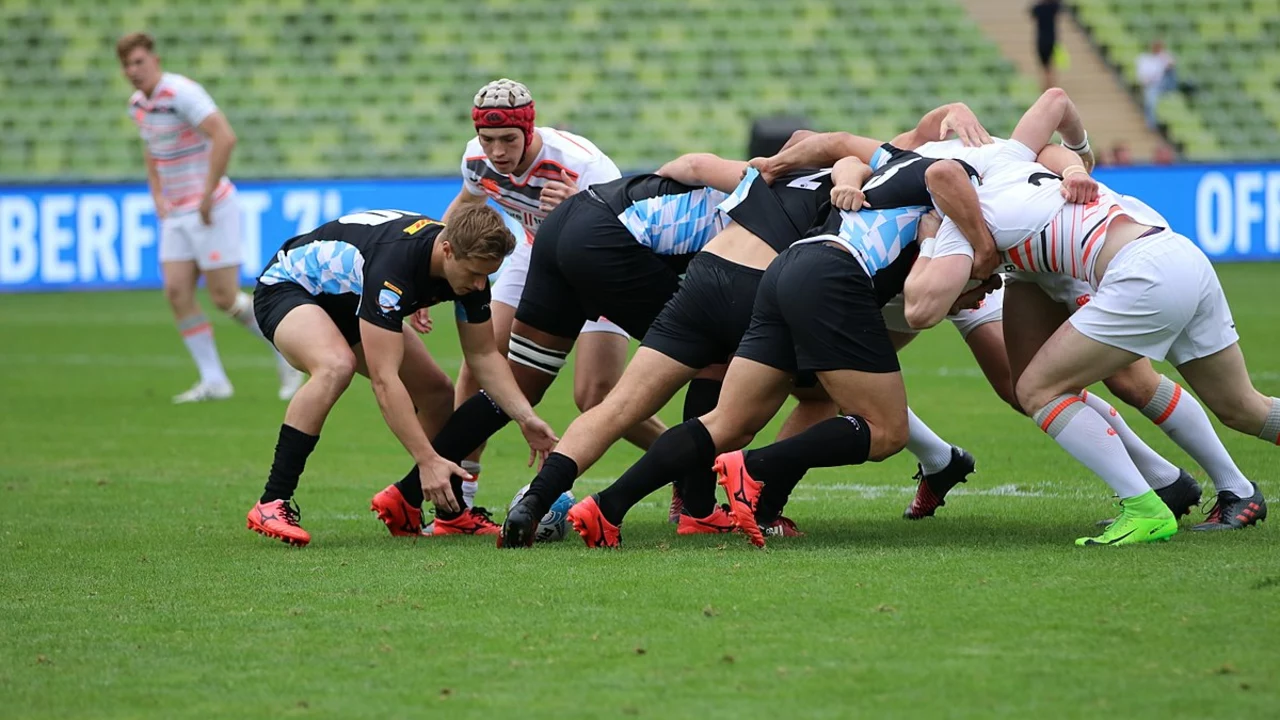Hey there, my sports fanatics! Let's dive into a quick yet fascinating lesson about the 40-20 rule in rugby league, shall we? In a nutshell, the 40-20 rule is like a secret weapon of the game! If a team, while inside their own 40-meter zone, kicks the ball into touch within the opponent's 20-meter zone, they get to keep possession! It's like a magic trick that turns the game on its head! Can you believe it? Just when you think you're backed against the wall, bam! You turn the tables with a well-placed kick! Keep that in mind next time you're watching or playing, it's a game-changer!
Sports & Recreation at Linlithgow Rugby Club
Welcome to the hub where we break down the bits of rugby that make the game exciting for anyone, whether you’re a player, a fan, or just curious. This page pulls together the most talked‑about topics from our club – from a sneaky kick rule to the fast‑paced world of sevens, and even why the sport isn’t as big in some European corners.
Rugby Rules You Should Know
One rule that often catches newcomers off guard is the 40‑20. If a team kicks the ball from inside its own 40‑meter line and it lands in touch inside the opponent’s 20‑meter zone, they keep the ball. It’s basically a strategic reward for a well‑placed kick, turning defense into attack in one move. Knowing this can change how you watch a game – suddenly a long kick isn’t just about distance, it’s about gaining territory and possession.
Understanding the 40‑20 helps you see why coaches coach their kickers to aim for that sweet spot. It also explains why you’ll hear commentators hype up a “potential 40‑20” when a player lines up for a kick deep in his own half.
Rugby Formats and Their Appeal
Ever wondered why there’s a version of rugby with just seven players per side? That’s sevens rugby – a lightning‑fast spin on the traditional 15‑a‑side game. Matches consist of two seven‑minute halves, so the whole contest wraps up in about 14 minutes, plus a brief halftime. With fewer players, the field opens up, leading to more line breaks, higher scores, and nonstop action.
Regular rugby sticks to 40‑minute halves and 15 players, giving more room for structured team play, set pieces, and tactical grinding. Both formats score the same way, but because sevens spreads the players thin, you’ll often see tries piled up quickly. One quirky difference: in sevens, conversions must be drop‑kicked, which adds a skill challenge you don’t see in the 15‑a‑side game where place kicking is the norm.
Choosing between sevens and regular rugby often comes down to what kind of experience you’re after – a sprint of excitement or a marathon of strategy. The good news is Linlithgow Rugby Club supports both, so you can try out a sevens tournament or dive into a full‑length league match.
Now, why isn’t rugby as popular across every European country? A big part of the answer lies in media exposure. Football (soccer) dominates TV slots, leaving rugby with less broadcast time, which means fewer people see it live. Less exposure also means fewer sponsors, making it tougher for clubs to invest in youth programs and facilities. Finally, rugby’s physical nature can deter some potential fans who worry about injuries.
Despite these hurdles, there’s a growing community of enthusiasts who appreciate the sport’s camaraderie and the respect built on the field. At Linlithgow, we’re working to change the narrative by hosting open training sessions, community events, and school visits. When more people get to see the game up close, the buzz builds and the sport gains traction.
Whether you’re here to learn a rule, compare game formats, or understand rugby’s place in Europe, you’ve come to the right spot. Keep checking this page for fresh insights, match updates, and tips that bring you closer to the action. Got a question? Drop us a message – we love chatting about anything rugby!
In my exploration of rugby, I've found that sevens rugby and regular rugby, while similar, have key differences. Sevens rugby is a faster, shorter game with only seven players per team, as opposed to the 15 in regular rugby. This version is played in two seven-minute halves, much shorter than the 40-minute halves in regular rugby. Interestingly, scoring is the same in both, but sevens rugby often results in higher scores due to the open field. Lastly, in sevens rugby, conversions must be drop-kicked, adding an extra challenge compared to regular rugby where place kicking is allowed.
Rugby is a sport that is popular in many countries around the world, but not in European countries. There are a number of reasons why rugby is not as popular in Europe as it is elsewhere. The main reason is that rugby is not as widely televised as other sports, such as soccer, which means that it is not as widely seen or followed. Additionally, there is less money in the sport, which means that it is not as attractive to sponsors. Finally, the sport itself is more physical than other sports and comes with a greater risk of injury, which means that it is less appealing to some people.


